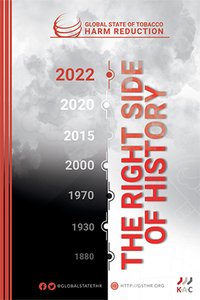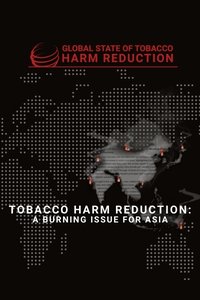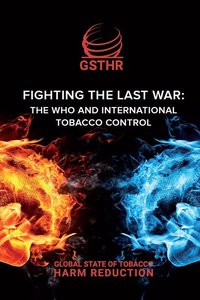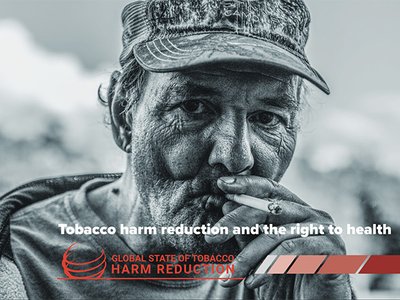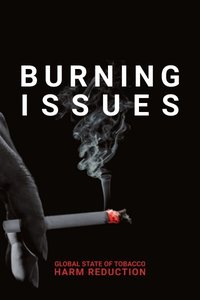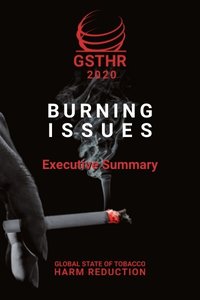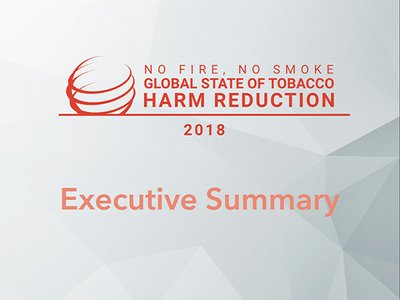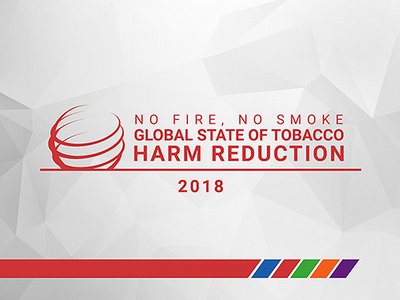THR Reports
The Right Side of History
GSTHR: The Right Side of History does not seek to replicate or revisit the previous GSTHR reports in detail. Instead, it steps back and casts an eye over the history of THR. Where did this history begin? And how has it developed? We bring the story right up to date with a final section that attempts to look into the near future.
The emergence of safer nicotine products, especially vaping, has brought seismic disruption to the commercial, clinical, public health, and legislative landscapes. This disruption has dominated the history of tobacco harm reduction so far. This report emphasises that effective harm reduction interventions, at minimal cost to governments and health agencies, can end smoking within a generation. The alternative is a continuation of approaches that will continue to fail those most in need. The price will be counted in the millions of lives that could have otherwise been saved.
The Right Side of History: The Global State of Tobacco Harm Reduction 2022 is the third of our biennial Global State of Tobacco Harm Reduction (GSTHR) reports. Since 2018, the series has been charting progress in the adoption of tobacco harm reduction (THR), an approach which encourages people who smoke or use risky tobacco to switch to the use of safer nicotine products (SNP). These products include nicotine vapes, Swedish-style snus, nicotine pouches and heated tobacco products.
Table of contents:
Introduction: The threat of disruption
Chapter 1: Dying for a smoke
Chapter 2: The genesis of tobacco harm reduction
Chapter 3: A stuttering evolution towards the quiet revolution
Chapter 4: Community innovation - and commercial expansion
Chapter 5: ‘Fear, Uncertainty and Doubt’
Chapter 6: Follow the money
Chapter 7: Regulating for health
Chapter 8: The right to use and the right to choose
Chapter 9: Future shoot
Tobacco Harm Reduction: A Burning Issue for Asia
Harry Shapiro
The focus of this GSTHR briefing is Asia. Sixty per cent of the world’s smokers live in this region and almost half the global deaths from smoking occur here. Asia is also home to nine in every ten users of smokeless tobacco (SLT), leading to high rates of oral cancer. In a number of countries, public health is severely undermined where governments either control or have a significant stake in domestic tobacco companies. New solutions are needed to tackle the public health threat from smoking and tobacco use - but safer nicotine products are banned in many countries. Would tobacco harm reduction improve public health in Asia? And if so - what are the obstacles that stand in its way?
The formal launch event for the briefing took place online on Sunday 18 April 2021 and was co-hosted with Association of Vapers India.
Fighting the Last War: the WHO and International Tobacco Control
Harry Shapiro (UK) - K•A•C
The latest report from K∙A∙C’s Global State of Tobacco Harm Reduction (GSTHR) argues that “tobacco control policy is frozen in time” while “innovative non-combustible nicotine technology and supporting evidence have moved forwards”. The status quo keeps adult smokers smoking rather than switching to safer nicotine, favouring the tobacco industry. Untangling the complex narratives underpinning the approach of the World Health Organisation and international tobacco control NGOs, this report aims to shed a light on the often hidden workings of these institutions, and the motivations behind their refusal to accept tobacco harm reduction as a valid approach to reduce the harms associated with high-risk tobacco use. Furthermore, this report argues that “THR has a complementary role to play in tobacco control and reducing cigarette consumption. Its potential can come to fruition if the international tobacco control community, led by the WHO, can disaggregate combustible from non-combustible tobacco products in its policy and legislative deliberations.”
Table of contents:
Chapter 1: Still too many left behind: the context for the report
Chapter 2: Hitting back against Big Tobacco: the background to the Framework Convention on Tobacco Control
Chapter 3: International tobacco control: structure and functions
Chapter 4: Tobacco harm reduction
Chapter 5: Trench warfare: the WHO, allies and funders
Chapter 6: What can be done? New thinking for the 21st century
Chapter 7: Final thoughts
Tobacco Harm Reduction and the Right to Health
Ruth Goldsmith (UK) - Knowledge•Action•Change
Tobacco harm reduction and the right to health offers an introduction and overview of key issues in tobacco harm reduction, its public health potential and its relationship with human rights. The report is available in English and 12 other languages: Arabic, Chinese, French, German, Hindi, Indonesian, Japanese, Polish, Portuguese, Russian, Spanish and Swahili.
Burning Issues: The Global State of Tobacco Harm Reduction 2020
Harry Shapiro - Knowledge•Action•Change
Burning Issues: The Global State of Tobacco Harm Reduction 2020 is the second in our biennial GSTHR series which documents the development of tobacco harm reduction and the use, availability and regulatory responses to safer nicotine products around the world. Burning Issues picks up the story after our first GSTHR report, No Fire, No Smoke, published in 2018.
Central to this report is the universal right to health for those who for whatever reason continue to engage in risky behaviours. Harm reduction refers to a range of policies that reduce the risks associated with these behaviours, or encourage less risky behaviours, thereby enabling people to survive and live better – in this case through access to safer nicotine products (SNP) aimed at encouraging people to switch away from cigarettes, one of the most dangerous ways of consuming nicotine.
Despite a more globally hostile environment for THR, our exclusive survey of global prevalence of safer nicotine products, included in this report, estimates that the overall figure stands at approximately 98m, of whom 68m are vapers. While from a public health perspective this is good news, it still means that after more than a decade of product availability, there are only nine users of SNP for every 100 smokers.
Table of contents:
About the report
Forewords
Introduction
Chapter 1: Smoking: the slow-burning killer
Chapter 2: Market forces: products and consumers
Chapter 3: Not just the nicotine: consumers speak
Chapter 4: Clearing the smoke: safer nicotine products and health
Chapter 5: Project fear: the war against nicotine
Chapter 6: The politics of health: SNP regulation and control
Chapter 7: The right to health and the people left behind
Chapter 8: Burning issues: conclusions and recommendations
Annex: Estimation of the global number of vapers
Burning Issues: The Global State of Tobacco Harm Reduction 2020 - Executive Summary
Harry Shapiro - Knowledge•Action•Change
A brief summary of our second GSTHR report which documents the development of tobacco harm reduction and use, availability and regulatory responses to safer nicotine products around the world.
No Fire, No Smoke - Executive Summary
Harry Shapiro - Knowledge•Action•Change
Executive Summary of "No Fire, No Smoke: The Global State of Tobacco Harm Reduction 2018". The executive summary is available in Arabic, English, French, Hindi, Indonesian, Japanese, Mandarin, Polish, Portuguese, Russian and Spanish.
No Fire, No Smoke: The Global State of Tobacco Harm Reduction 2018
Harry Shapiro - Knowledge•Action•Change
No Fire, No Smoke: The Global State of Tobacco Harm Reduction 2018 was the first in the series of biennial GSTHR reports. Inspired by the drug harm reduction reports of Harm Reduction International, published on a biennial basis since 2006, this landmark publication was the first to document the history and development of tobacco harm reduction, as well as the use, availability and regulatory responses to safer nicotine products around the world. This GSTHR report mapped for the first time the global, regional and national availability and use of safer nicotine products, the regulatory responses to these products, and the public health potential of tobacco harm reduction. This report explores in detail the potential of safer nicotine products to unlock a public health revolution, if and when these products are embraced globally.
The GSTHR report series is founded on the principle of harm reduction. Harm reduction refers to policies, regulations and actions focussed on reducing health risks, usually by providing safer forms of hazardous products or encouraging less risky behaviours, rather than simply banning products or behaviours. Harm reduction is a proven public health strategy.
Table of contents:
Chapter 1: Introduction: tobacco harm reduction
Chapter 2: The continuing global epidemic of cigarette smoking
Chapter 3: Safer nicotine products: a global picture
Chapter 4: Consumers of safer nicotine products
Chapter 5: Safer nicotine products and consumer health
Chapter 6: Regulation and control
Chapter 7: Human rights, public health and tobacco harm reduction advocacy
The "vaping timeline" infographic can be downloaded here.
